Koblenz
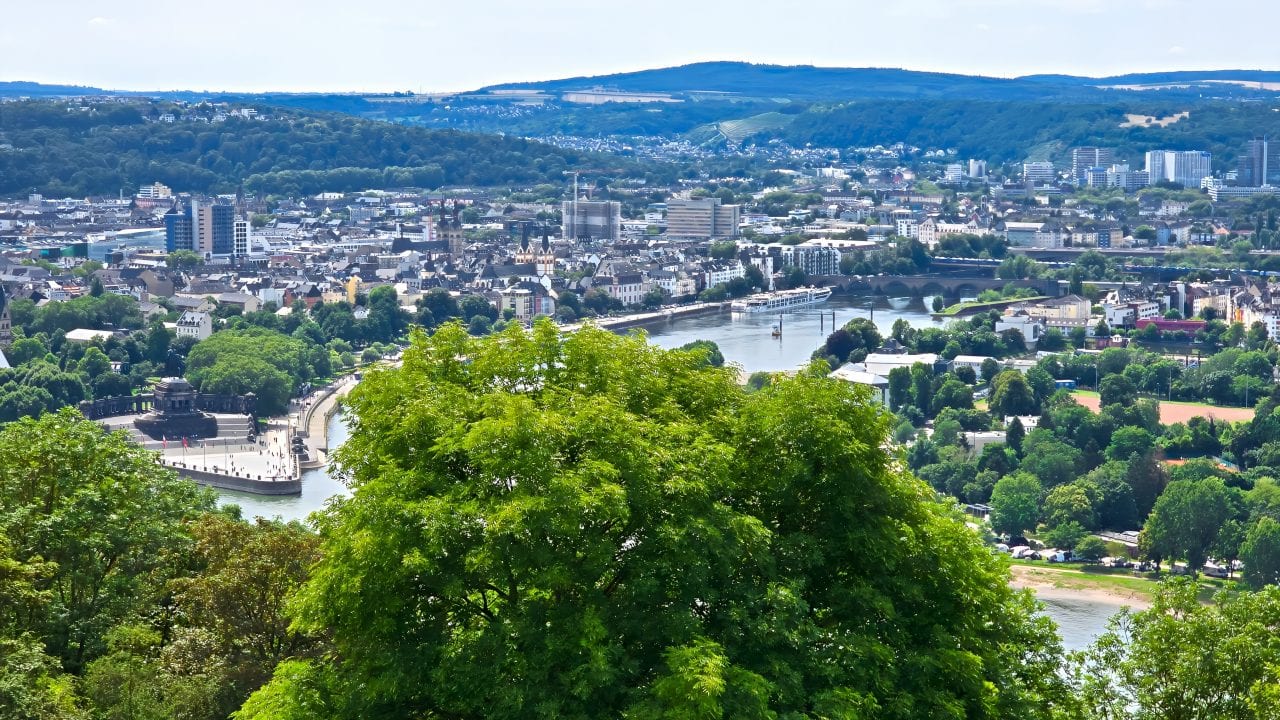
Koblenz is a fascinating city with deep historical roots. Mike and I cycled into Koblenz and explored the city exactly six weeks ago today. I usually pride myself on keeping these posts current, but there’s a good reason this one is a bit delayed. When I wrote about the Rhine Gorge, I deliberately left out Koblenz, which is generally considered the starting point of the gorge. My thinking was that we would revisit Koblenz again as we cycled north along the Rhine. I had hoped to capture some additional and better photos on our second visit. Unfortunately, our first visit was on a damp and dreary day.
As you know, our plans shifted. First, we decided to cycle along the Mosel before continuing north. Our one-week detour turned into a great month-long visit to the area. Next, with much sadness, I gave in to my husband and agreed that this would be our last year travelling with our camper in Europe. This meant skipping the rest of the Rhine to explore southern Belgium and the Netherlands. Considering that Mike was born and has family in the Netherlands, I thought we should take the opportunity to see more of the country. We did return to the Koblenz area a couple of times while trying to repair our now-deceased boat.
On one of those trips, we managed to drive up above the city and capture the view you see in the picture above. The name “Koblenz” actually comes from the Latin word for “confluence”. The triangular platform in the photo marking the point where the Rhine and Mosel rivers meet, is known as the Deutsches Eck or the German Corner. The Rhine is the river running along the bottom of the picture The cruise ship in the centre is on the Mosel River. Standing proudly on the Deutsches Eck is a large, imposing statue of Emperor William I on horseback. It was erected in 1897 to honor him as the first Emperor of a unified Germany following the Franco-Prussian War. Our picture of a dark statue on a damp day didn’t turn out very well.
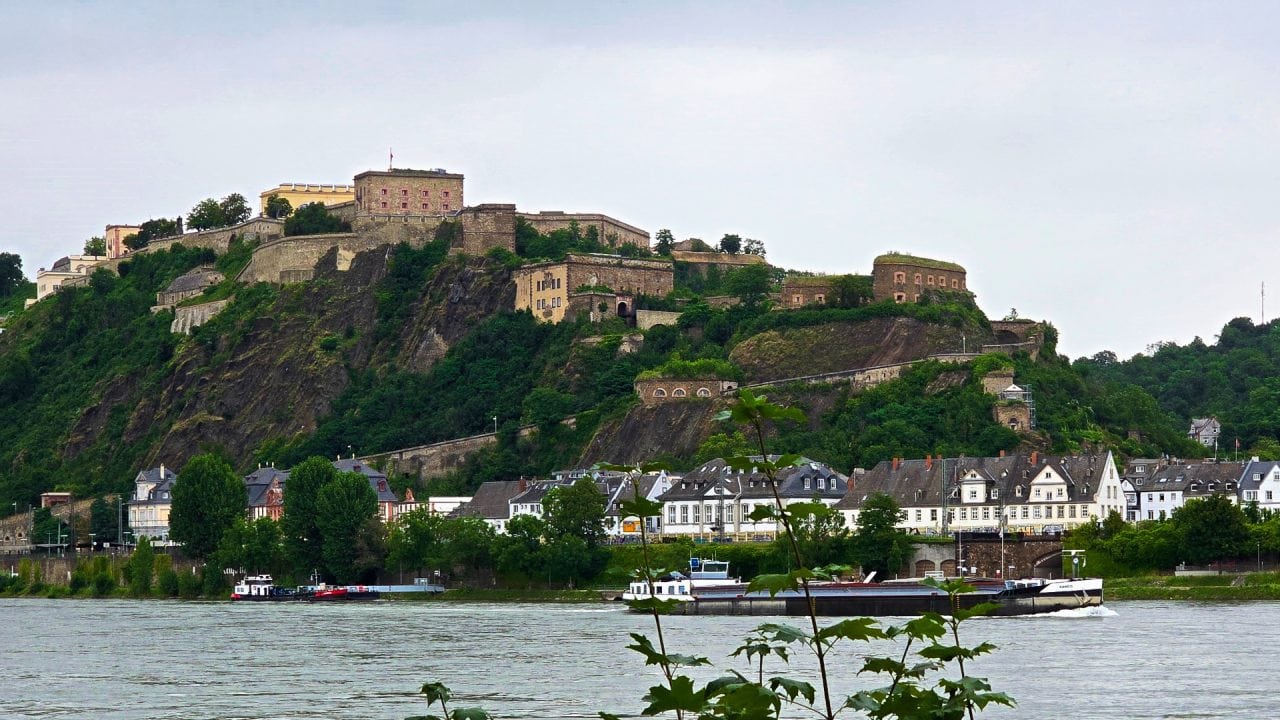
The massive Ehrenbreitstein Fortress towers over the Rhine River and dominates the skyline of Koblenz. It is named after Ehrenbert, a nobleman who erected a castle on the same location over 1,000 years ago. While there have been fortifications on this site for over a thousand years, the current fortress was built in the 1800s. As one of the largest fortresses in Europe, it’s an impressive sight.
You can reach the fortress by taking a cable car, which many people rave about for the stunning views. However, with 35 people packed into each car, I wasn’t sure how good my photos would be, given my 5 foot (156 cm) height. I thought that we might return on a weekday to ride the cable car but it never happened.
Koblenz itself is steeped in history. It is one of Germany’s oldest cities, founded by the Romans more than 2,000 years ago, around 8 B.C.
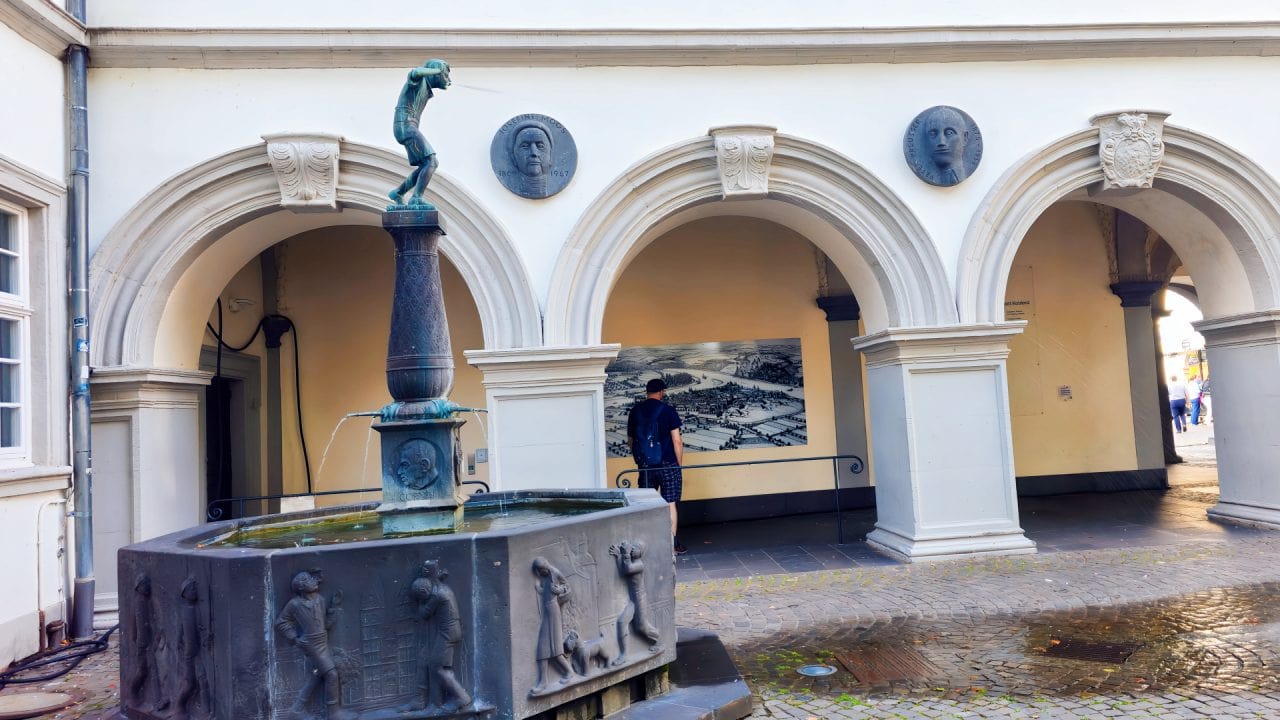
The statue of the boy is known as the Schängelbrunnen or Schängel fountain. Located in the courtyard of the town hall (Rathaus), this statue was built in 1940 to embody the mischievous and playful spirit linked to the term “Schängel,” a nickname for locals from Koblenz. True to its reputation, the boy occasionally sprays water at unsuspecting passersby, much to Mike’s amusement, although he wasn’t so sure how thrilled parents might be with it.
I was fascinated by another piece in the city—the 10-meter (33 feet) tall History Column, which was erected in 1992 to mark the 2000th anniversary of Koblenz’s founding. This column is adorned with 10 intricately designed bronze reliefs, each depicting a different era in the city’s rich history. According to the internet “Each of the column’s segments illustrates a key era or significant event in Koblenz’s history, ranging from the Roman period to the Middle Ages, through the Renaissance, the Baroque period, and the devastations of the World Wars. The top of the column represents the city’s contemporary, post-war period, symbolizing rebirth and growth.”
I spoke with a German camper who was eager to make sure Mike and I visited Koblenz. He wanted to ensure that we fully grasped the city’s historical importance.
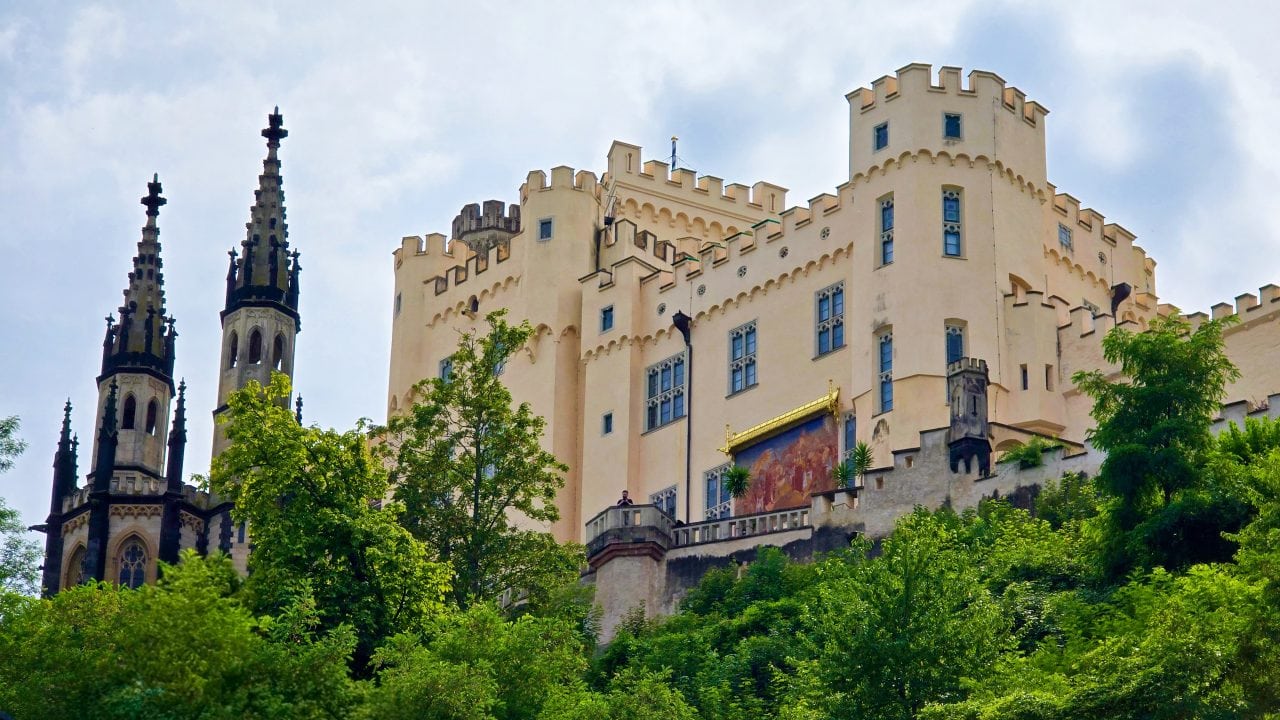
While driving around with our non-working boat and motor, we passed Schloss Stolzenfels several times. It looked even more superb from across the Rhine River.
It seems unlikely that Mike and I will return to Koblenz. The city struck me as quite interesting, and I would have liked to have explored it a bit more. The photo below was taken from a bridge over an island in the Mosel River, with the fortress on the Rhine visible in the distance and the spires of Florins Church to the right.
We’ve now left Germany for Belgium and will update you soon.
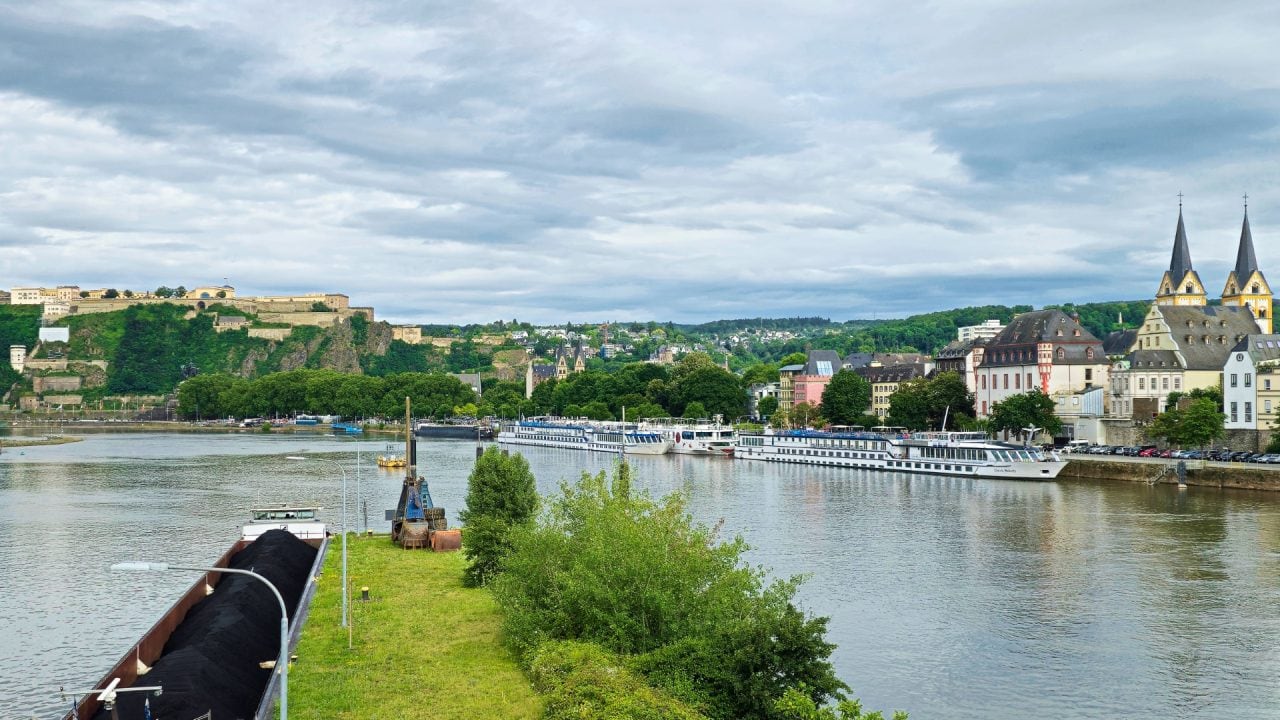

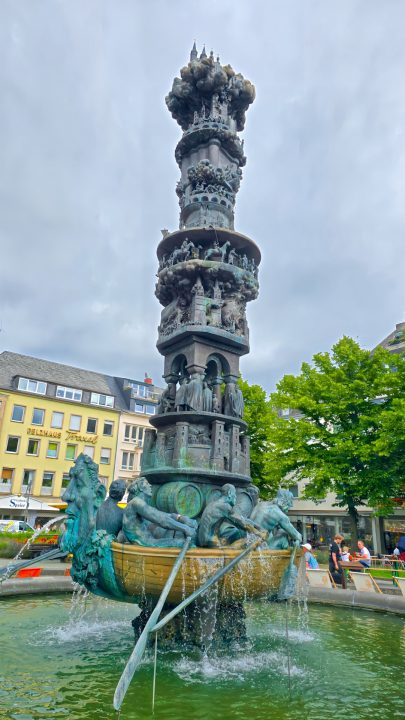
Leave a Reply